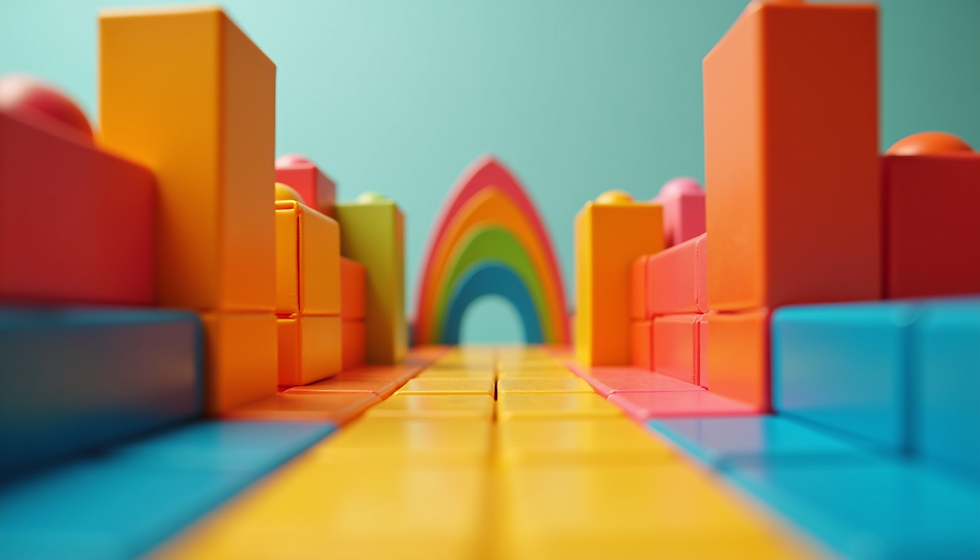The Benefits of Combining Movement and Cognitive Exercises for Special Needs Individuals
- Gifted Gabber

- Apr 20
- 3 min read
In recent years, research has increasingly shown the value of blending movement with cognitive exercises, especially for individuals with special needs. This holistic method enhances physical health while boosting cognitive development, creativity, and problem-solving abilities. By merging activities like art and math, which tap into tactile skills and mental processing, we create an engaging environment that promotes learning and personal growth.
Understanding the Intersection of Movement and Cognition
Movement goes beyond just physical activity; it is essential for cognitive function. Engaging in physical exercises improves blood flow to the brain, enhancing both concentration and memory. For individuals with special needs, merging movement with cognitive tasks can lead to impressive improvements.
Cognitive exercises, such as art creation or solving math problems, actively engage the mind and require creative thinking. For example, painting encourages individuals to express emotions through color choices, and tackling math challenges can stimulate logical thinking. Combining these cognitive tasks with movement creates a rich learning experience that can yield benefits across various dimensions.
The Role of Art in Cognitive Development
Art is a particularly effective tool for building cognitive skills in individuals with special needs. It fosters sensory engagement through elements like colors and shapes, activating different brain regions responsible for processing visual information. Activities such as painting, sculpting, or drawing can help improve fine motor skills and artistic expression.
Creating art is often about the experience rather than just the outcome. While participating in artistic activities, individuals can develop essential skills like critical thinking, patience, and perseverance. For instance, a study found that engaging in art can reduce anxiety levels by up to 30%, offering a creative outlet for emotions that may be hard to express verbally.
Image Placeholder

Mathematics and Creative Problem-Solving
Math is foundational for logical thinking and structured problem-solving. It engages the brain's analytical side, enhancing skills like pattern recognition and critical thinking. For special needs individuals, math can be taught in ways that integrate movement and artistic expression effectively.
For example, using items like blocks or beads to illustrate mathematical concepts allows for a clearer understanding of abstract ideas. Engaging physically in math activities, such as counting steps while walking or measuring distances with tape measures, makes learning more dynamic. Research shows that students who engage in kinesthetic math activities retain information better, improving their understanding by about 20%.
Combining Movement with Art and Math
The true magic occurs when movement is linked with both art and math. This strategy provides a comprehensive educational experience that addresses diverse learning styles. By designing activities that require physical movement while also incorporating art and math, educators can create a lively atmosphere that fosters holistic growth.
For instance, setting up an outdoor art station where individuals can make large-scale paintings not only encourages physical activity but also sparks creative expression. In this setting, math can be woven in by having participants estimate the area of their art or calculate the amount of paint needed for a project. This integrated approach not only deepens learning but also enhances engagement.
Benefits Beyond Learning
The advantages of pairing movement with cognitive exercises reach beyond academics. For individuals with special needs, such an approach can lead to better emotional regulation and social skills. Physical activity has been shown to lower anxiety and depression, which is especially beneficial given the challenges many individuals face daily.
Moreover, participating in group activities that combine movement, art, and math helps build social interaction, allowing individuals to form friendships and community connections. This sense of belonging is vital for emotional development and overall well-being.
Image Placeholder

Practical Applications
Implementing this integrative approach requires creativity and flexibility. Here are some practical strategies for educators, therapists, and caregivers:
Movement Breaks: Include short physical activity breaks between cognitive tasks to refresh focus. Simple movements like jumping jacks or stretches can energize both the body and mind.
Thematic Projects: Create art projects that involve math principles. For example, participants can make geometric shapes through painting or construct sculptures while learning to measure dimensions.
Outdoor Learning: Conduct lessons outside, utilizing nature to explore both art and math. Activities might include measuring tree heights or creating art inspired by the surroundings.
Interactive Games: Develop games that incorporate physical activity and math challenges, such as an obstacle course where participants solve math problems at various stations.
Embracing a Holistic Approach
Combining movement with cognitive exercises like art and math offers enormous benefits for individuals with special needs. This comprehensive method improves physical health, cognitive abilities, creativity, and social skills. By designing engaging and adaptable activities, we can meet the diverse learning needs of these individuals and support their journeys of growth, joy, and self-expression.
As we keep exploring and applying this integrative approach, we contribute to a brighter future where everyone has the chance to thrive and realize their full potential.



Comments